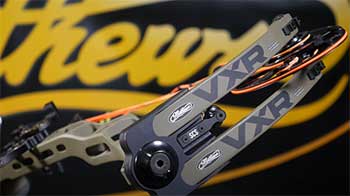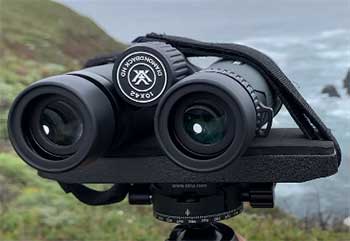Whether you’re Hawkeye the superhero or just someone who likes to shoot, you’ll need a good bow to help you. Mathews V3 and VXR both qualify for that role and they’re surprisingly similar too.
The major differences between them are their build, speed, draw cycle, and cost.
Both V3 and VXR are amazing bows. They also do a good job of living up to their hype. But if you had to choose one, which one should you go for? Here’s a side-by-side comparison to help you decide.
A Quick Summary of Comparison
| Feature | Mathews V3 | Mathews VXR |
| Build | Shorter, lighter | Taller, heavier |
| Speed | Faster | Fast |
| Draw cycle | Smoother | Stiffer |
| Cost | Less affordable | Affordable |
Done with the gist? Here’s a detailed comparison, let’s dig in.
Key Differences Between Mathews V3 And VXR
Anyone who has used both bows will tell you how eerily similar they are. Both have a similar build, a solid reputation, and good outputs backing them up. So differentiating between them is harder than you’d imagine.
But it isn’t impossible. There are some subtle and not-so-subtle differences between the bows. Their build, speed, draw cycle, and cost are the biggest differentiating factors here.
Let’s see how the bows are different from each other.
- Different Build

Both models look very similar, close to twins at first glance.
But when you look closer and shoot some shots, the difference becomes evident.
V3 is the smaller bow between the two.
Whatever height you get, the 27” or 31”, it will be smaller than the VXR. The VXR stands at 28” and 31’5”. The difference isn’t much in the paper.
And it definitely doesn’t feel much when you’re comparing them riser to riser, but it is there.
Another notable difference is their weight. V3 is a lighter bow than VXR. Some people believe the difference is because of the height difference, but that isn’t confirmed.
Plus the height difference between the bows isn’t big enough to make a noticeable difference in weight.
Another big difference is the rest on both bows. The V3 has a slightly higher rest than the VXR. It also comes secured with the center guard.
The center guard equalizes the angle of the cables and gives you extra vane clearance.
Aslo Read: Problems With Burris Oracle X Rangefinding Crossbow Scope.
- Speed
Another barely noticeable difference. Both bows are pretty fast and they’re supposed to give you the same speed for shooting. But real time testing will show you one of the bows gives you slightly less speed than the other.
The common notion in general people is that lighter bows will give you more speed. It doesn’t really work that way. Bow speed depends on other factors besides weight.
Both V3 and VXR bows slow down when you use arrows with higher grains. On average, V3 gives out around 326 fps speed against its official 342. The VXR on the other hand will give you around 324 fps on average against its official 344 fps.
To put it simply, the V3 is faster than VXR. The real-to-official speed output ratio is also better with the V3 and that’s a key factor.
Note that the speed you get from your bow can change with the condition of your shooting range.
- Draw Cycle

The Draw cycle is the action of pulling the string back.
If you’ve ever used a bow, you know the draw cycle smoothness basically decides how much work you’ll have to put in.
A smooth draw cycle means less work, and a stiff one means the opposite.
The V3 bow is miles ahead of VXR in this department. The drawstring pulls back with ease.
Overall, it is as smooth as it gets. VXR on the other hand is stiffer than V3 (and a lot of other bows). That means you’ll have to apply extra force when you’re shooting.
This is also bad for you if already have shoulder issues. You’ll put extra stress on your shoulder with the VXR which might make things worse.
- Cost
This is probably the most visible difference between the two models. V3 is pricier compared to the VXR but only if you get the VXR 28” on sale. Otherwise, all versions of the two models go for $1199 each.
Which One Should You Choose?
As you can tell, both bows are very similar. The output you’ll get is also very close so it will all boil down to your personal preference.
If you want something lighter, smoother, and faster then V3 is the best option between two. Sure you’ll be splurging a little but it is definitely worth it.
If you want something more affordable and don’t mind a stiffer draw cycle, go for the VXR. The differences are minimal and you may not even feel any difference from the V3 at all.
Overall, V3 is the better choice here. But the best option is to try out both models and pick the one you’re most comfortable with.
Also Read: Differences Between PSE And Mathews Hunting Bow.
Frequently Asked Questions (FAQ)
Here are a bunch of questions people usually ask about Mathews’ V3, VXR, and bows in general.
The difference s not much. V3 has a slightly different build than VXR, which is faster and more affordable. V3 also gives you a smoother draw cycle.
Yes, it very much is. Mathews V3 is one of the most accurate output-giving bows you’ll find in the market.
Mathews V3 is supposed to be 342 fps on paper. But in real-life testing, the bow measures at around 326 fps on average.
Yes, you can still get Mathews VXR bows from any of their permitted dealers.
Final Verdict
The Mathews V3 and VXR comparison is like gum, it will go on and on if you keep stretching. But at the end of the day, the choice will come down to what you prefer.
If you want speed and smoothness, V3 is your guy. If you want something bigger and more stable, VXR is a good choice.
Make sure to try out both bows before you get one. that way you’ll know which one suits you better.


